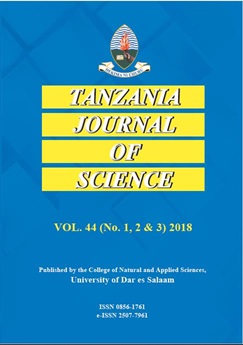Household and Community Factors Affecting Nutritional Status of Under-five Children (6-59 months) in Gairo District Using Composite Index of Anthropometric Failure
DOI:
https://doi.org/10.4314/tjs.v49i1.7Abstract
In Tanzania, where the majority of under-five children are affected, undernutrition is still a significant public health concern. The study aimed at assessing the prevalence of undernutrition and its determinants among under-five children in Gairo District using a Composite Index of Anthropometric Failure (CIAF). A household-based cross-sectional study was employed involving 300 under-five children with their mothers/caregivers in three wards in the Gairo District. Data collection on socio-demographics, dietary diversity, and healthcare factors were collected by interviewer-based semi-structured questionnaires. Anthropometric measurements using standard procedures were performed to collect anthropometric data. Odds ratios with a 95% confidence interval and p-value ‰¤ 0.05 were used to identify determinants of undernutrition. Prevalence of undernutrition using CIAF was 57.3%, whereby children with single failure were 105 (61%), double failures were 62 (36%) and triple failures were 5 (2.9%). Factors that were significantly associated with undernutrition were the nearest health facility (p = 0.014; OR: 0.504 (0.291-0.873)), place of delivery (p = 0.000; OR: 0.717 (0.107-0.490)), source of drinking water (p = 0.001; OR: 0.452 (0.283-0.722)), type of latrine (p = 0.000; OR: 21.338 (9.807-46.427)), household solid waste disposal method (p = 0.012; OR: 1.806 (0.682-1.964)), birth weight (p = 0.000; OR: 5.400 (2.625-11.109) and marital status (p = 0.00; OR: 0.403 (0.240-0.676)). Therefore, nutrition intervention efforts should be given to the factors reported to positively affect undernutrition.
Keywords: Undernutrition, factors, Gairo, under-five, CIAF


